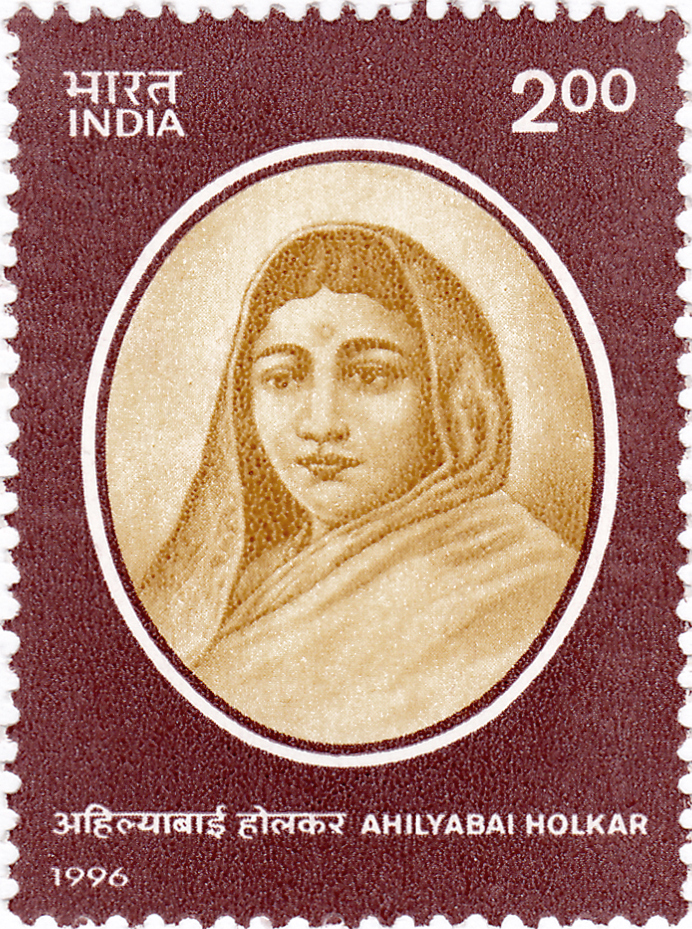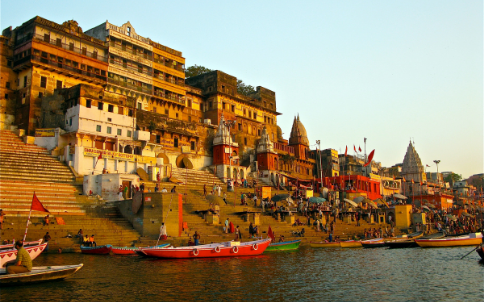She survived Sati to become a great statesman and Hero. That sterling personality could have been simply burnt in pyre of her husband. It was the vision of her father in law, the wisdom of that woman created a history. She was Ahilya Bai Holkar, who lived between 31st May 1725 to 13 August 1795. She was as valiant and courageous as Jhansi Lakshmi Bai.

Ahilya Bai was a powerful military commander and sincere devotee, who revived hundreds of Hindu temples in India, silently without a drop of blood or creating dissentions between communities, that should be remembered on International Women’s Day, especially in India. She has rebuilt Ayodhya and Varanasi among several other Jyotirlangas and Shakti Peethas in India, during her life time.
In Varanasi (Uttar Pradesh), she has reconstructed the Kashi Vishwanath Temple in 1780, (1780). Construction of 9 temples including those of Shri Tarakeshwar, Shri Gangaji, Ahilya Dwarkeshwar, Gautameshwar; (re)construction Ghats including Manikarnika Ghat, Dashashwamedh Ghat, Janana Ghat, Ahilya Ghat, Shitala Ghat; construction of Uttarkashi Dharmashala, Rameshwar Panchkoshi Dharmashala, Kapila Dhara Dharmashala & gardens was taken up by her.
She was born in village Chondi in Jamkhed of Ahmednagar, Maharashtra, but ruled the kingdom in central India from Maheshwar, Indore on the banks of Narmada River.
Her husband Khanderao Holkar was in war with Jat Maharaja Suraj Mal. Holkar laid seize of Mal’s Kumher, who was supporting Wazir Safdar Zang, the rebel of Mughal Emperor in Bharatpur state. The Mughal Emperor, Ahmad Shah Bahadur’s Mir Bakshi and Imad-ul-mulk were fighting in support of Holkar.
The war between Mughal army plus the army of Khandelkar and Maharaja Suraj Mal was very intensive during 1754. When Khandelkar was sitting in open palanquin and inspecting his troops a cannon ball from Jat army hit him and he was killed instantly.
Ahilya gave up all her desires and was rigid to accompany her husband beyond life by immolating herself on his pyre. Writer Anne Feldhaus (21 March 1996) in his book “Images of Women in Maharashtrian Literature and Religion”. SUNY Press, pp. 18, it was quoted that her father in law Malhar Rao Holkar made very emotional appeal to her stop her, saying: ““Daughter, my son left me whom I raised with a hope that he would support me in my old age. Now, will you also leave me, an old man, alone to be drowned in the fathomless ocean? … Will you also leave me without any support? Still, if you don’t want to change your mind, let me die first.” She agreed. Her father in law, after him, her son Male Rao Holkar ruled Indore, while Ahilya played a very active role in administration.
According to R. V. Solomon; J. W. Bond (2006). Indian States: A Biographical, Historical, and Administrative Survey, Asian Educational Services. pp. 70) when her son died in 1767, Ahilya requested Peshwa to permit her to take over the administration. In spite of some objections, she was made the queen as she was popular with the army with her skilful leadership. She has ascended to the throne on 11 December 1767.
Ahilya was very good administrator and trained as military commander. She was courageous enough to lead the army from the front. Reposing great trust in her ability Malhar Rao wrote to daughter in law in 1765: “proceed to Gwalior after crossing the Chambal. You may halt there for four or five days. You should keep your big artillery and arrange for its ammunition as much as possible…The big artillery should be kept at Gwalior and you should proceed further after making proper arrangements for its expenses for a month. On the march you should arrange for military posts being located for protection of the road”. In this letter he asked her to manufacture gun balls and balls of smaller size.
In the same year when Malhar Rao was fighting the Abdali-Rohilla Army in Delhi, Ahilyabai Holkar captured Gohad Fort near Gwalior. She has built forts and roads in Malwa along with banks of Narmada River.
As an ardent devotee, Ahilya pooled in resources to build, renovate and develop hundreds of ancient temples from Himalayas to southern part of India. In all these temples across the nation, she built dozens of ghats, new temples, wells, tanks and rest-houses.
She has renovated Kashi (Vaaranaasi), Somnath, Ayodhya, Mathura after devastating destructions caused by enemy rulers/ Besides, she has also built Haridwar, Gaya, Kanchi, Avanthi, Dwarka, Badrinarayan, Rameshwar and Jagannath Puri.
Ganga from Gangotri to Tirupati
It is interesting to note that Ahilyabai has built such systems for supplying water from the river Ganga collected at Gangotri to the significant temples in all sides of India, during those days. They are: Venkateshwara (Tirupati Balaji) temple, Andhra Pradesh, Rameshwara Jyotirlinga, Tamil Nadu. Srisailam Mallikarjunaswamy Jyotirlinga, Andhra Pradesh, Janardanaswamy temple, Kerala, Padmanabhaswamy temple, Kerala, Mahabaleshwara temple, Karnataka, Subrahmanyeshwara temple, Andhra Pradesh, Pasupateshwara temple, Tamil Nadu. Dwarkadhish temple, Gujarat, Ranchhorji temple, Gujarat, Utkanteshwara temple, Gujarat, Vaijanath temple, Tryambakeshwara Jyotirlinga, and Panchavati temple, Maharashtra, Matrugaya temple, Gujarat.
Siddheshwara temple, and several other temples in Maharashtra, Bhimashankara Jyotirlinga, Maharashtra, Pandharpur Panduranga temple, Maharashtra. Eklingji temple, Rajasthan, Somanath Jyotirlinga, Gujarat, Nathadwara Shrinathji temple, Rajasthan, Loteshwara temple, Gujarat Rajarajeshwara temple, Kerala, Mahakaleshwara Jyotirlinga, Omkareshwara Jyotirlinga, in Madhya Pradesh, Kashi Viswanath Jyotirlinga, Uttar Pradesh Vaidyanath Jyotirlinga, Jharkhand, etc. Even now most of these services are maintained by the Khasgi, Devi Ahilyabai Holkar Charities Trust of Indore.
Jawaharlal Nehru, in his Discovery of India (1946), wrote about her: “The reign of Ahilyabai, of Indore in central India, lasted for thirty years. This has become almost legendary as a period during which perfect order and good government prevailed and the people prospered. She was a very able ruler and organizer, highly respected during her lifetime, and considered as a saint by a grateful people after her death.” She died on 13 August 1795 at the age of 70. Her rule is remembered as golden age in the Indore’s history. After her, the commander-in-chief and nephew Tukoji Rao Holkar ruled.




